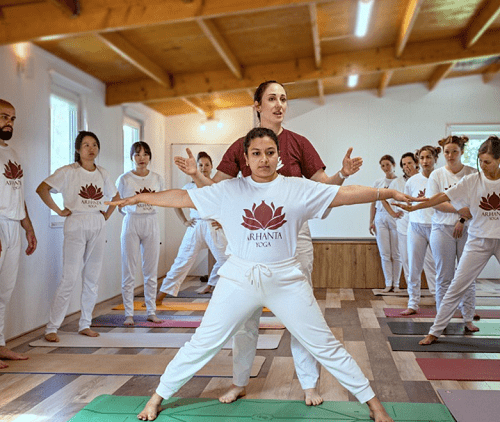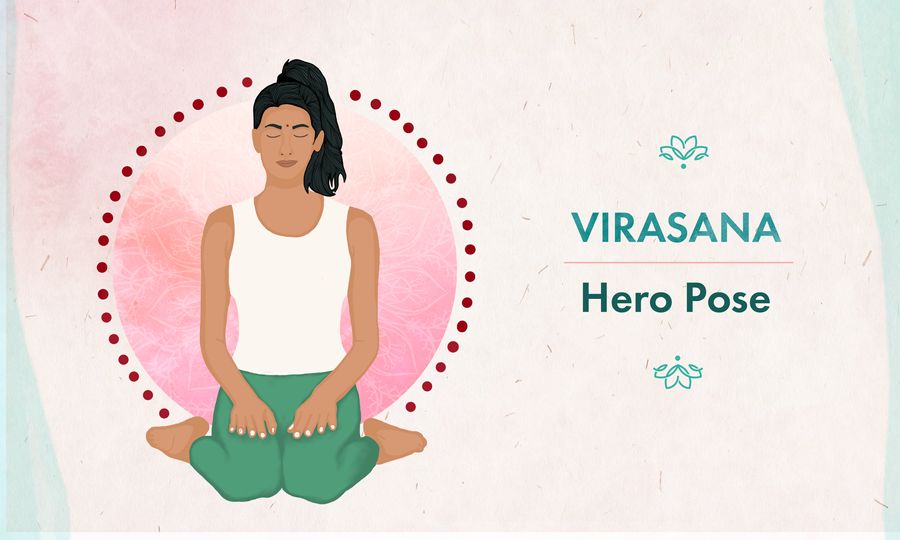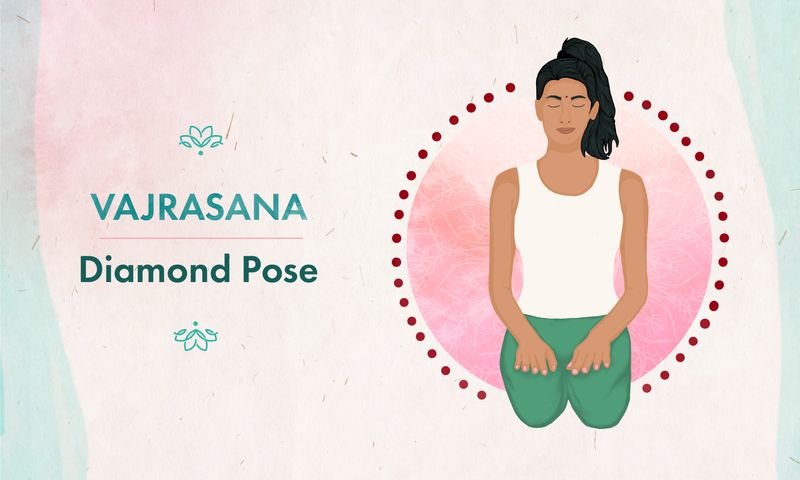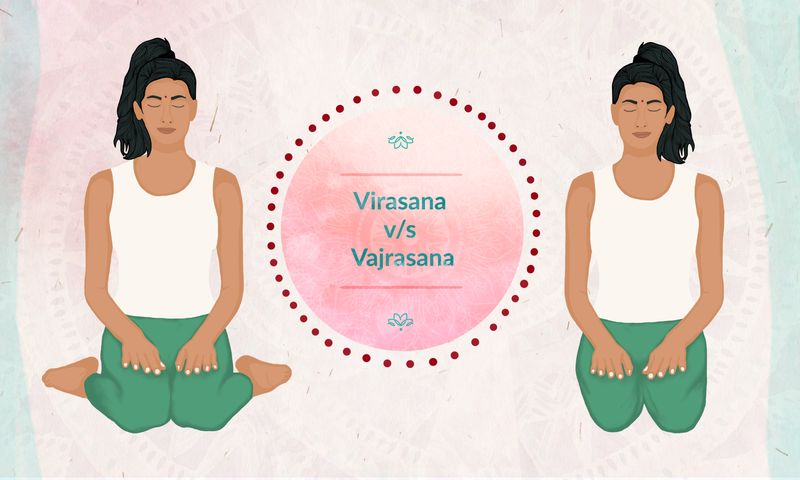It’s not surprising that Virasana and Vajrasana can sometimes cause confusion. The Sanskrit names have only a couple of letters difference between their spellings, and both are upright kneeling poses. Fortunately, the difference is clear once you know what to look for.
The Difference Between Virasana and Vajrasana
In their upright kneeling form, these poses look similar - but the leg position is different. To put it very simply, in Virasana you kneel sitting BETWEEN your feet, while in Vajrasana you kneel sitting ON your feet.
Both poses require ankle and foot flexibility, but the small difference in leg position makes a big difference to the range of movement required at the hips and knees.
- Sitting between your feet in Virasana requires a lot of internal rotation at the hip, as well as rotation and extreme flexion at the knee.
- Vajrasana requires full flexion at the knee, but allows the hip to rest in a mid-range flexed position.
These differences mean there are also differences in how you can safely enter the poses, what benefits they offer, and also what modifications might be helpful for your practice.
What’s in a name - Virasana and Vajrasana
Virasana/Hero
The ‘vira’ in Virasana comes from a Sanskrit word meaning champion, hero or warrior. Virasana is therefore also known as Hero Pose. The same Sanskrit origin appears in Virabhadrasana, which you may recognize as Warrior Pose.
Vajrasana/Diamond
In Vajrasana, the Sanskrit ‘vajra’ was a weapon with the meaning diamond or thunderbolt. Vajrasana therefore is often called Diamond Pose or Thunderbolt Pose.
Benefits of Virasana or Vajrasana
Virasana/Hero
Vajrasana/Diamond
How to Use Virasana or Vajrasana
Both Hero and Diamond can be incorporated into a sequence of asanas, or a class.
If comfortable and not causing any strain on joints, both poses are suitable to hold for a few breaths, or for longer periods. They can be used for meditation, or as a resting pose

Experience authentic Hatha Yoga
Get free access to exclusive guided lessons with master teacher Kalyani Hauswirth-Jain
Step-by-step guides to Virasana and Vajrasana
Virasana/Hero

1. Start in a tall kneeling position with hips straight. Knees are together.
2. Move your feet apart, slightly wider than your hips, keeping the tops of your feet flat on the floor.
3. Carefully sit down between your feet. If your buttocks reach the floor with no strain felt in the joints, sit tall with your weight resting through your sit bones on the floor.
4. If your sit bones don’t reach the floor, or the position causes strain in joints or muscles, use modifications to make the pose safe and useful.
Vajrasana/Diamond

1. Start in a tall kneeling position with hips straight. Knees are together.
2. Point your toes and press the tops of your toes firmly on the floor.
3. Breathe out as you lower yourself into a sitting position with your buttocks resting on your heels.
4. Let your hands rest on your thighs, palms facing downward. Relax your shoulders and arms, and close your eyes.
Helpful Tips for Virasana and Vajrasana
For both poses, a gentle stretch is acceptable but pain or uncomfortable strain should be avoided by using modifications.
Injuries and unstable or sensitive joints should be treated with care - use modifications until your joints are able to tolerate a deeper position.
Listen to your body and accept the feedback it gives you.
Virasana/Hero
Vajrasana/Diamond
Conclusion
Virasana and Vajrasana are just two of the many seated poses in yoga. Seated poses can be useful for practicing mudras, mantras and meditations. The anatomy of your bones and flexibility of other tissues may dictate how much you need to modify any pose, particularly Virasana. Always modify to suit your body - this is a vital part of practicing yoga.

